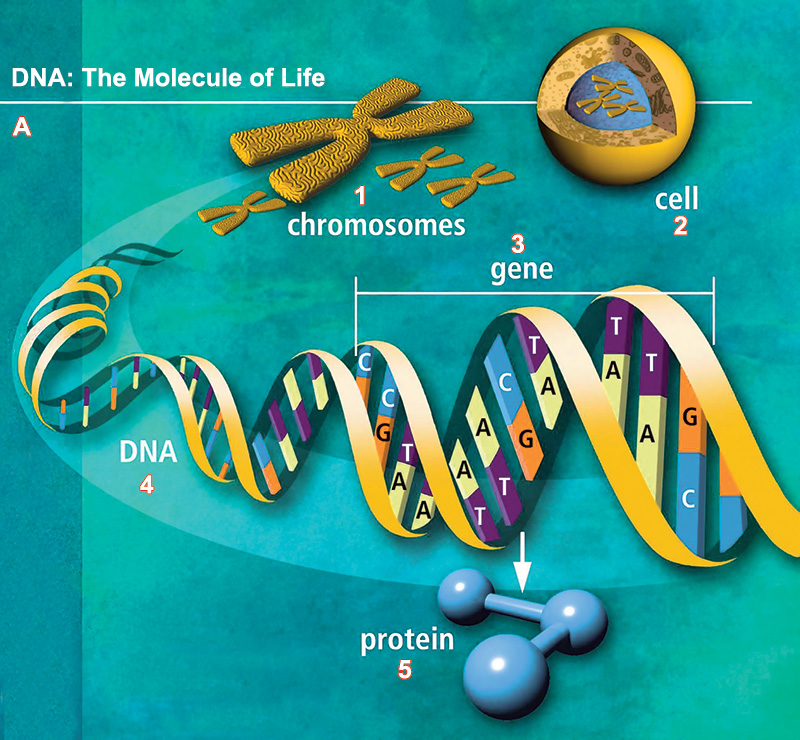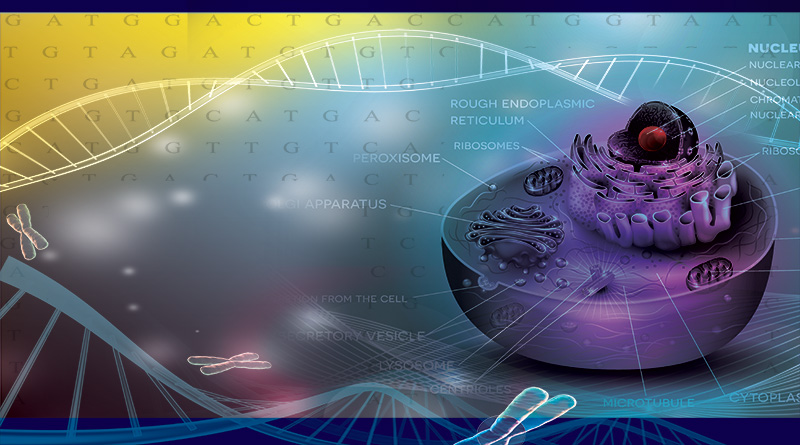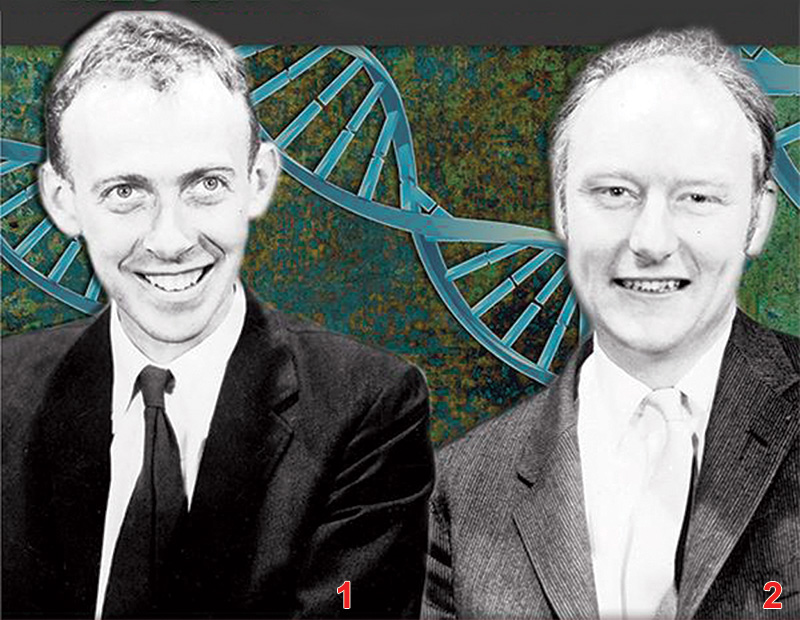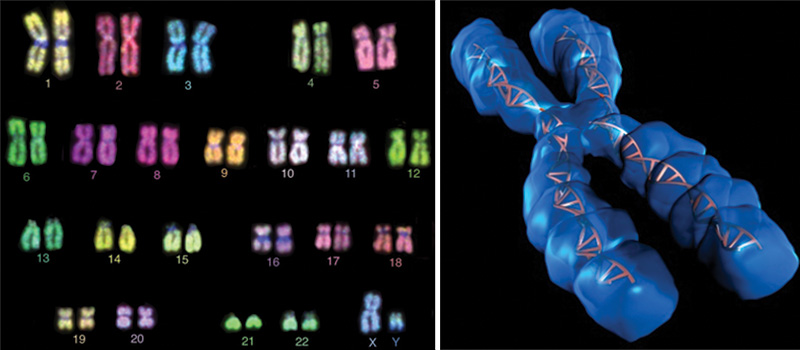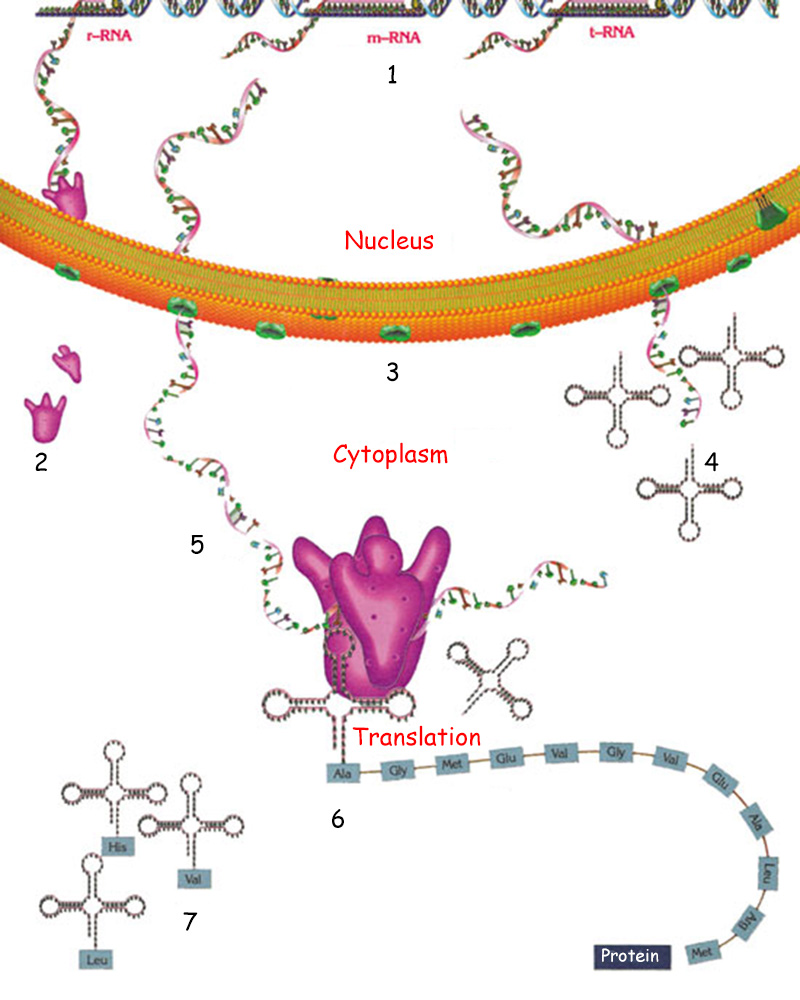Bigotry: The Dark Danger
The Origin of Life and the Universe - 1st International Conference 2016
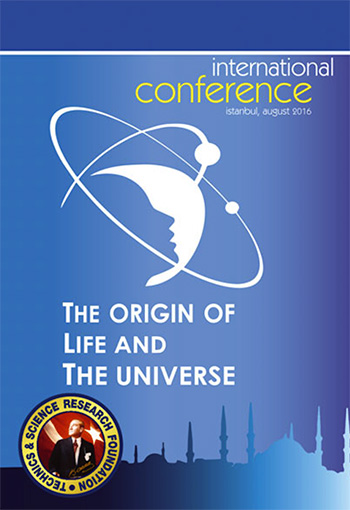
DOWNLOAD THE BOOK
CHAPTERS OF THE BOOK
- Introduction
- Altuğ Berker's Presentation: "Darwinism Prevents Teaching of Science"
- Dr. Fazale R. Rana’s Presentation: "Why I Believe God Exists: A Biochemist Makes a Case for the Creator"
- Dr. Anjeanette AJ Roberts's Presentation: "Un-Equivocating Evolution"
- Dr. Jeff Zweerink’s Presentation: “The Beginning and Design of the Universe"
- Dr. Oktar Babuna’s Presentation: “Collapse of the Evolution Theory and the Fact of Creation”
- Dr. Cihat Gündoğdu’s Presentation: “Darwinism Legitimizes All Kinds of Oppression”
- Conclusion
< <
3 / total: 8
Dr. Fazale R. Rana’s Presentation: "Why I Believe God Exists: A Biochemist Makes a Case for the Creator"I am truly honored to be here today. It really is a privilege to be part of this conference. We live in a world today where there is so much conflict. It is refreshing to be part of a project where the goal is to show the world that Christians and Muslims can work together towards a common goal. Showing that there is scientific evidence for God’s existence and also showing that there are genuine scientific challenges to the evolutionary paradigm. Both are objectives that Muslims and Christians can agree upon. In the second point that there are scientific challenges to the theory of evolution is very important. Because if evolutionary mechanisms can explain the origin, history and the design of life, then both believers and nonbelievers, alike, can rightly ask: ‘What role is a Creator to play?” In fact, evolutionary biologist and atheist Richard Dawkins says in his book The Blind Watchmaker: “Although atheism might have been logically tenable before Darwin, Darwin made it possible to be an intellectually fulfilled atheist.”
Statements like these cause many people to conclude around the world that conflict exists between science and religion with science eventually winning the war. In August 2015, The Pew Research Foundation in United States published data showing that 75% of people who never attend church or seldom attend church think that there is conflict between science and religion. And you have to wonder that perception of conflict is the reason why they refuse to entertain the possibility of God’s existence. Tragically, 50% of people who attend church on a regular basis in the United States think there is conflict. This is a very sad state of affairs. And yet, it was science that brought me to the conviction that a Creator must exist. When I entered college, I was an agnostic. I didn’t know if God existed or not, and I honestly didn’t care. I simply wasn’t interested in religion as a young man. The focus of my attention was biochemistry. I wanted to do everything that I could to prepare myself to go to graduate school to earn a PhD in biochemistry. As an undergraduate student, I was convinced that evolutionary mechanisms could account for the origin, history, and design of biological systems. But my convictions were not based on a careful examination of the evidence. But instead, they were based on what my biology professors taught me. I admired my professors and because I respected them I accepted what they said about evolution uncritically. In many ways, my acceptance of the evolutionary paradigm fueled my agnosticism. When I speak on university campuses in the United States, I run into students who—like me— think that evolution is a fact but it is not because they’ve examined the evidence, it is because their professors had taught them that very truth. Or that claimed “truth”. When I have graduated school my views changed. You might say that biochemistry convinced me that God must exist. One of the primary goals of graduate education is to teach the student to independently think through the scientific evidence and develop conclusions based on the evidence alone, regardless of what other scientists say. And because I was learning to think for myself, I was willing to ask questions that I did not ask as an undergraduate student. One of those questions was: How did life originate? The elegant design, the sophistication, and the ingenuity of biochemical systems prompted me to ask that question. I wanted to know: How does the scientific community account for the origin of such remarkable biochemical systems through strict mechanistic processes? After examining the various explanations available at that time– it was 30 years ago– I know I look mush younger than that but it was 30 years ago - I was shocked. The explanations presented by the scientific community seemed to me to be woefully inadequate. I was convinced that chemical and physical processes could not generate life. This realization coupled with the elegant design and biochemical systems forced me to the only conclusion possible– for intellectual reasons alone– that a Creator must indeed exist and must have been responsible for bringing life into being. I reached that conclusion over 30 years ago. In the prevailing decades, the scientific evidence has continued to affirm my conclusions about God’s existence. The case that can be made today for God’s existence from biochemistry and the problems associated with the origin of life has even become more compelling than 30 years ago. The goal of my lecture is to present to you the reasons why I think— that God exists as a biochemist. To summarize my argument you just need to remember 3 words: Fingerprints; Failure; and Fashion. FINGERPRINTS: A Creator’s Fingerprints are Evident in Biochemical SystemsAs a biochemist, one of the things I find absolutely remarkable is that the whole mark features of the cell’s chemical systems are identical to those features that we would recognize as evidence for the work of a human designer. In other words, when human beings design, create, and invent systems, objects, and devices, those things that we make, have certain properties that reflect the work of a mind. And it is provocative to think that those same features are defining biochemistry in its very essence. So if certain features reflect the work of a human mind, and we see them in biochemical systems is this not evidence that they too must be the work of “A Mind”? Because of time constraints, I’m only going to focus on one of these features today, namely the fact that there are information systems found inside the cell. At their essence, biochemical systems are information systems. Two major classes of biomolecules that harbor information: 1) The nucleic acids, such as DNA and RNA; the DNA is depicted on the left and Both types of molecules are chain-liked nature. These molecules are formed when the cell’s machinery links together smaller, subunit molecules in a head-to-tail fashion to form molecular chains. In the case of DNA and RNA, the subunits are nucleotides or sometimes called the genetic letters abbreviated: A, G, C, and T. In the case of proteins, the subunit molecules are amino acids. Twenty different amino acids are encoded by the genetic code. The cell’s machinery uses these 20 amino acids to construct proteins. Biochemists often think of the nucleotides used to build RNA and DNA and the amino acids used to build proteins, as molecular alphabets. Just as alphabet letters are used to build words in English or in the Turkish language, amino acid sequences are used to construct biochemical words—proteins—that carry out specific functions inside the cell. Nucleotide sequences are used to store information in DNA. In fact, the function of DNA is to store information that the cells machinery uses to build proteins. The regions of the DNA molecule that contain the information needed to build a single protein is called a gene. The recognition that biochemical systems are information systems indicates that life must come from a Mind. Why? Because whenever we encounter information we recognize that there is a mind behind that information. When you receive a text message; when you receive an email; if you receive a letter in the mail or you see a sign on the side of the road, you invariably conclude that there is a mind that undergirds that information. So in like manner, when we see that biochemical systems harbor information that is the first indication that these come from a mind. But the case for a Creator doesn’t rest solely on the existence of information in the cell. The argument is much more sophisticated. As it turns out, information theorists who study problems in molecular biology have come to the conclusion that the structure of the cell’s information is identical to the structure of human language and its organization. It is not merely the presence of information, but the fact that the information is organized in the same way that we organize information. There is a language inside the cell. One of the most provocative insights I have ever learned relates to the structure and function of biochemical information. In fact, this insight keeps me awake at night as I think through the implications. It turns out that biochemical machinery that manipulates DNA is literally functioning like a computer system at its basic essence. Because this insight is so critical I think to the case for a Creator, I would like to spend a little bit of time elaborating on this point. To understand that we need to think through theoretical construct of a computer system. The theoretical basis for computer systems are abstract machines called Turing machines. These are not actual machines but rather abstract entities that exist in a mind of a computer scientist. Turing machines are simple. They consist of 3 parts: 1) The input; which is a string of data that goes into something called a finite control. 2) And that finite control; alters that string of data in a limited but prescribed manner producing an output string of data and this is a cartoon showing a hypothetical 3) Turing machine; it turns out that you can link the output of one Turing machine to the input to another Turing machine. And in doing so, you can take rather simple machines and combine them to perform complex operations. As it turns out, this is precisely what happens when the cells machinery manipulates DNA. For example during the process of DNA replication where the DNA which harbors digital information can be thought as being the input and the proteins and the enzymes that manipulate DNA during the replication can be thought as the finite controls. Here is a cartoon showing DNA replication where again the DNA represents the input and the output and the enzymes that manipulate the DNA are the finite controls. In other words when the cells machinery replicates the DNA it says if a computer system is operating in the very interior of the cell. Because of the similarity between how computer systems function and processes like DNA replication computer scientists have been inspired to develop a new technology called DNA computing. The DNA computing essentially is based on the DNA and the proteins found inside the cell that manipulate DNA.
These DNA computers are found inside little tiny test tubes, that are this size. And these computers are more powerful than the most powerful silicone based computer system that we have. They are more powerful than super computer systems. And the reason is because you can perform massive parallel operations simultaneously. DNA computing is the brainchild of a computer scientist by the name of Leonard Adleman who is at the University of Southern California. And this is what Leonard Adleman says about the DNA computing: “The most important thing about DNA computing is that it shows that DNA molecules can do what we normally think only computers can do. This implies that Computer Science and Biology are closely related.
That every living thing can be thought to be computing something, and that, sometimes, we can understand living things better by looking at them as computers. (Will Clifford, Feb 2, 2003, “DNA Computing: Meet Dr. Adleman”, [Online] Youngzine) ” Again, DNA computing highlights the remarkable similarities between human designs and the designs that we see inside the cell. We can make advantage of these astounding similarities to construct a formal argument for God’s existence by following in the footsteps of the British Natural Theologian William Paley. In the late 1700s, Paley wrote a book called Natural Theology. In this work, Paley advanced one of the best known arguments in the west for God’s existence: the Watchmaker Argument. Paley reasoned in this way: Just as a watch requires a watchmaker, life requires a Divine Watchmaker. In Paley’s day, the watch was the pinnacle of engineering achievement. Paley pointed out that a watch is a contrivance — a machine composed of a number of parts that interact precisely to accomplish the purpose. Paley contrasted the operation of a watch with a rock. Paley argued that a rock finds explanation through the outworking of natural processes. But a watch requires a MIND to explain its existence. Based on a survey of biological systems, Paley concluded that living systems have more in common with the watch than a rock. And if a watch requires a watchmaker to explain its existence, then by analogy, living systems require a mind to explain their existence. Advances in biochemistry allow us to bring the Watchmaker Argument up-to-date. We know from common experience that computer systems—the pinnacle of engineering achievement in our day—require a mind (in fact, many minds) to explain their existence. And because we find computer systems operating within the cell, we can reasonably conclude that life requires a Divine Mind to account for its existence. I find the Watchmaker Argument to be compelling. Yet, in my experience when I present this argument to skeptics, they will argue that evolutionary processes can serve as the watchmaker. In fact, they regard these processes as the Blind Watchmaker. This idea is articulated by Richard Dawkins in his book The Blind Watchmaker. Dawkins says this: “[Paley] had a proper reverence for the complexity of the living world, and he saw that it demands a very special kind of explanation. The only thing he got wrong was the explanation itself… The true explanation…had to wait for…Charles Darwin.” Dawkins goes on to add: “Natural selection, the blind, unconscious, automatic process which we now know is the explanation for the existence and apparently purposeful form of all life, has no purpose in mind. It has no mind and no mind's eye. It does not plan for the future. It has no vision, no foresight, no sight at all. If it can be said to play the role of a watchmaker in nature, it is the blind watchmaker.” This brings me to the second point of my argument.
FAILURE: All Attempts Taken to Explain the Origin of Life Hence the Origin of Biochemical Systems Through Chemical Evolution or a Blind Watchmaker have Resulted in Failure.In order to appreciate this point we must first have a very quick review of the way and which biochemist categorizes biomolecules. We’ve talked about information harboring molecules like DNA and proteins. But there is another class of molecules in the cell. These are small molecules that react with each other to form linear pathways, branched pathways and circular pathways. These are all interconnected with each other to form a vast network of chemical reactions in the cell. And these reactions harvest energy for the cell to use to produce the cell’s building blocks. These are referred to as intermediary metabolic pathways. And finally the third category is cell membranes. These are boundaries that separate the interior of the cell from the exterior environment. Or they separate compartments inside the cell. And each category of biomolecules has spurred different scenarios for the origin of life. They are called replicator-first scenarios, metabolism-first scenarios and membrane-first scenarios. According to replicator-first scenarios it was information-rich molecules like DNA and RNA and proteins that emerged first and metabolism and membranes are secondary features. Metabolism-first scenarios argue that metabolism emerged first. And then information-rich molecules and membranes as secondary feature and finally membrane-first scenarios argue it was a cell membrane that appeared first. It is important to realize that each approach proposed by the origin of life researchers suffer from intractable problems. And I’m not going to discuss these problems this morning because of time constraints. My colleague Dr. Anjeanette Roberts will talk a little bit about some of these problems in replicator-first scenarios. But I want to tell you a story that illustrates how significant the problem is. A number of years ago I attended an origin-of-life conference in Oaxaca Mexico. This conference was called ISSOL 2002. This meeting attracted some of the best origin-of-life researchers around the world. The opening lecture of that conference was delivered by a scientist by the name of Leslie Orgel. When he was alive, Orgel was considered the preeminent origin of life researcher in the world. And he was given the honor at this conference of presenting the opening lecture to the conference. And he was asked to summarize the status of the RNA World Hypothesis, an idea that he was one of the originators of. Throughout his lecture, Orgel detailed problem after problem with the RNA World scenario. Towards the end of his talk, he paused, and he said, “I hope that there are no creationists in the audience, but it would be a miracle if a strand of RNA ever appeared on the primitive Earth.” It is remarkable. Orgel was known as an outspoken atheist. Yet, in an honest moment, he had to acknowledge that the origin of life at least from a replicator first stand point appeared to be basically a miracle. Metabolism-first scenarios fare no better. Again there are problem after problem after problem we can identify with these scenarios because of time I’m not going into them, but I’m just going to simply say this that when Orgel was alive one of the last scientific journal articles he wrote was a critical review a metabolism-first scenario where he said that these scenarios require: “an appeal to magic”, “a series of remarkable coincidences”, “a near miracle”. And finally, when it comes to membrane-first scenarios they too are riddled with problems. Some of these problems are listed on the slide: ◉ Environmental conditions Again I’m not going into details because of time constraint. But a few years ago, a chemist by the name of Jackie Thomas and I published a paper in a journal called Origins of Life and Evolution of Biospheres. This is one of the World’s leading origin of life research journals. We detailed the problems associated with membrane-first scenarios. This was a remarkable achievement because both Jackie Thomas and I are creationists. And yet the problems we identified with membrane-first scenarios are so significant, even evolutionary biologists had to acknowledge that our critique was legitimate. The Editor-in-Chief of the journal consented to publish our critical assessment of membrane-first scenarios in this premier origin-of-life research journal. In other words, every attempt to explain the origin of life has resulted in failure from an evolutionary standpoint. When it comes to the origin of life, you cannot say there is a blind watchmaker. When I present this evidence to origin of life researchers they are very quick to agree that at this point in time, we have no explanation for the origin of life. But they argue that we still think that we might be able to explain chemical evolution someday. Because of successes that they claim to have in the laboratory or they’ve been able to make for example building block materials through what are called prebiotic chemical experiments. Or they can make biopolymers or evolve RNA molecules in the lab or make self-replicating systems and manufacture protocells. And they point to this and say this demonstrates that chemical evolution could be conceivable and this brings me to the third point of my argument. FASHION: Attempts to Create or Fashion Life in the Lab make a very Powerful Case for a Creator.When chemists go into lab to perform prebiotic chemistry studies, they are working under highly controlled conditions. They carefully assemble the glassware. They fill the glassware with the appropriate solvents. They add the just-right chemicals at the just-right time at the just-right concentrations. They control the temperature of the reaction. They control the pH of the reaction. They stop the reaction at that just-right time. In other words, the chemists are contributing to the success of the prebiotic chemistry studies. It is highly questionable if these highly-controlled conditions would have ever existed on the early Earth. While chemists may be present in the laboratory today, they were not present on the early Earth to oversee prebiotic chemistry. To put it another way, intelligent agency insures the success of these prebiotic reactions in the lab. Let me illustrate this point by discussing the RNA World Hypothesis. This centerpiece of this idea is the notion that the very first biochemistry was based on RNA. Later the RNA World evolved to give rise to the DNA-Protein World that characterizes contemporary biochemistry. There are a number of lines of evidence that origin-of-life researchers like to point to in favor of the RNA World Hypothesis. I’m only going to tell you one of those lines of evidence and this has to do with the ability to make RNA on clay surfaces in the laboratory. In the mid-1990s, when this was accomplished this was heralded as a huge breakthrough in favor of the RNA World Hypothesis. But, when you examine the details of the experiments it very quickly becomes evident that Intelligent agency was critical for this process to take place. The researchers for example have to operate under highly chemically pristine conditions. They have to exclude materials that would interfere with the production of the RNA chains. They have to exclude materials that would cause the RNA molecules to break down once they form. These materials would have been present in abundance on the early Earth. But again they are excluded from their experiments. They have to stop the reaction before the RNA chain gets too long. Because if it gets too long it becomes irreversibly attached to the clay surface. They also have to use what are called chemically-activated nucleotides. These materials would never have existed on the early Earth if they did somehow they would be so chemically reactive they would react with everything in sight and would not be available to make RNA molecules. In addition the clay they use has to come from a specific supplier in the United States. That clay has to be treated in the just right way in the laboratory if not it could not be used as a catalyst for this reaction. This is what Paul Davies an astrobiologist has said about the RNA World Hypothesis: “As far as biochemists can see, it is a long and difficult road to produce efficient RNA replicators from scratch. This conclusion has to be that without a trained organic chemist on hand to supervise, nature would be struggling to make RNA from a dilute soup under any plausible prebiotic conditions.” (P. Davies, The Fifth Miracle: The Search for the Origin and Meaning of Life, New York, Simon & Schuster Paperbacks, 1999, p. 131) Evolutionary biologist Simon Conway Morris goes one step further: “Many of the experiments designed to explain one or other step in the origin of life are either of tenuous relevance to any believable prebiotic setting or involve an experimental rig in which the hand of the researcher becomes for all intents and purposes the hand of God.” (Simon Conway Morris, Life's Solution: Inevitable Humans in a Lonely Universe, Cambridge University Press, 2003, p. 41) This is ironic, the very experiments that the scientists perform to try to demonstrate that validity of chemical evolution and a blind watchmaker approach to the origin of life have unwittingly demonstrated that intelligent agency is the key ingredient in the transformation of non-living molecules to life. This conclusion, and I’m going to close in just a minute, this conclusion is further illustrated by work in synthetic biology. Synthetic biology is relatively new area in biology where the goal is to create artificial life in the lab. And one of the goals is to make protocells. Starting with simple chemicals and try to make cellular entities. And it becomes readily apparent when you examine this work how important intelligent agency is. And let me illustrate this by talking about a study done a few years ago where researchers were trying to make an enzyme from scratch unlike anything that existed in nature. An enzyme could be thought of just a small component in the overall machinery of the cell. It took a team of quantum chemists, computational chemists, protein engineers, biochemists and molecular biologists to pull this off and it required hundreds of hours of supercomputer time to model the chemistry. And they had to use structural motifs from biology to build the proteins. It required highly skilled scientists working in highly controlled conditions in the laboratory utilizing sophisticated chemical instrumentation. That itself was intelligently designed to pull this off. And what they made was laughable compared to what you see in nature. ‘Although our results demonstrate that novel enzyme activities can be designed from scratch” they write “and indicate the catalytic strategies that are most accessible to nascent enzymes, there is still a significant gap between the activities of our designed catalysts and those of naturally occurring enzymes.’ There is no blind watchmaker. And so when you look at these three facts that when we examine biochemical systems we see evidence for the work of a Mind we see a Creator’s fingerprints. We can show that every attempt to explain the origin of life through chemical evolution has led to fail. And we can show that attempts to create life in the lab unequivocally demonstrate the necessary role of intelligent agency really left with one conclusion. The life itself must come from the work of a Mind. It is gratifying to me to think that 30 years later the conclusions I came to as a young graduate student are valid. If you are open-minded and if you really follow the evidence where it leads, in my view, there is only one conclusion and that is: There has to be a Creator, there has to be a Creator that brought life into existence. The question then becomes for all of us who is that Creator how do we relate to that Creator which are far more important questions that whether not a Creator exist in my opinion. Thank you so much.
Footnotes1- Frank B. Salisbury, "Doubts About The Modern Synthetic Theory of Evolution", p. 336 2- Francis Crick, Life Itself: It's Origin and Nature, New York, Simon & Schuster, 1981, p. 88 3- Orgel, Leslie E, "Darwinism at the Very Beginning of Life", New Scientist, vol. 94 (April 15, 1982), p.151 4- Douglas R. Hofstadter, Gödel, Escher, Bach: An Eternal Golden Braid, New York: Vintage Books, 1980, p. 548 5- Leslie E. Orgel, "The Origin of Life on Earth", Scientific American, vol. 271, October 1994, p. 78 6- Haskins, Caryl P., "Advances and Challenges in Science in 1970", American Scientist, vol.59 (May/June 1971), p.305) 7- Michael Denton, Evolution: A Theory in Crisis, London: Burnett Books, 1985, p. 351 8- John Horgan, "In the Beginning", Scientific American, vol. 264, February 1991, p. 119 9- G.F. Joyce, L. E. Orgel, "Prospects for Understanding the Origin of the RNA World", In the RNA World, New York: Cold Spring Harbor Laboratory Press, 1993, p. 13 10- Jacques Monod, Chance and Necessity, New York: 1971, p.143 11- Leslie E. Orgel, "The Origin of Life on the Earth", Scientific American, October 1994, vol. 271, p. 78 |
|||||||||||||||||||||||||||
3 / total 8
You can read Harun Yahya's book The Origin of Life and the Universe - 1st International Conference 2016 online, share it on social networks such as Facebook and Twitter, download it to your computer, use it in your homework and theses, and publish, copy or reproduce it on your own web sites or blogs without paying any copyright fee, so long as you acknowledge this site as the reference.

